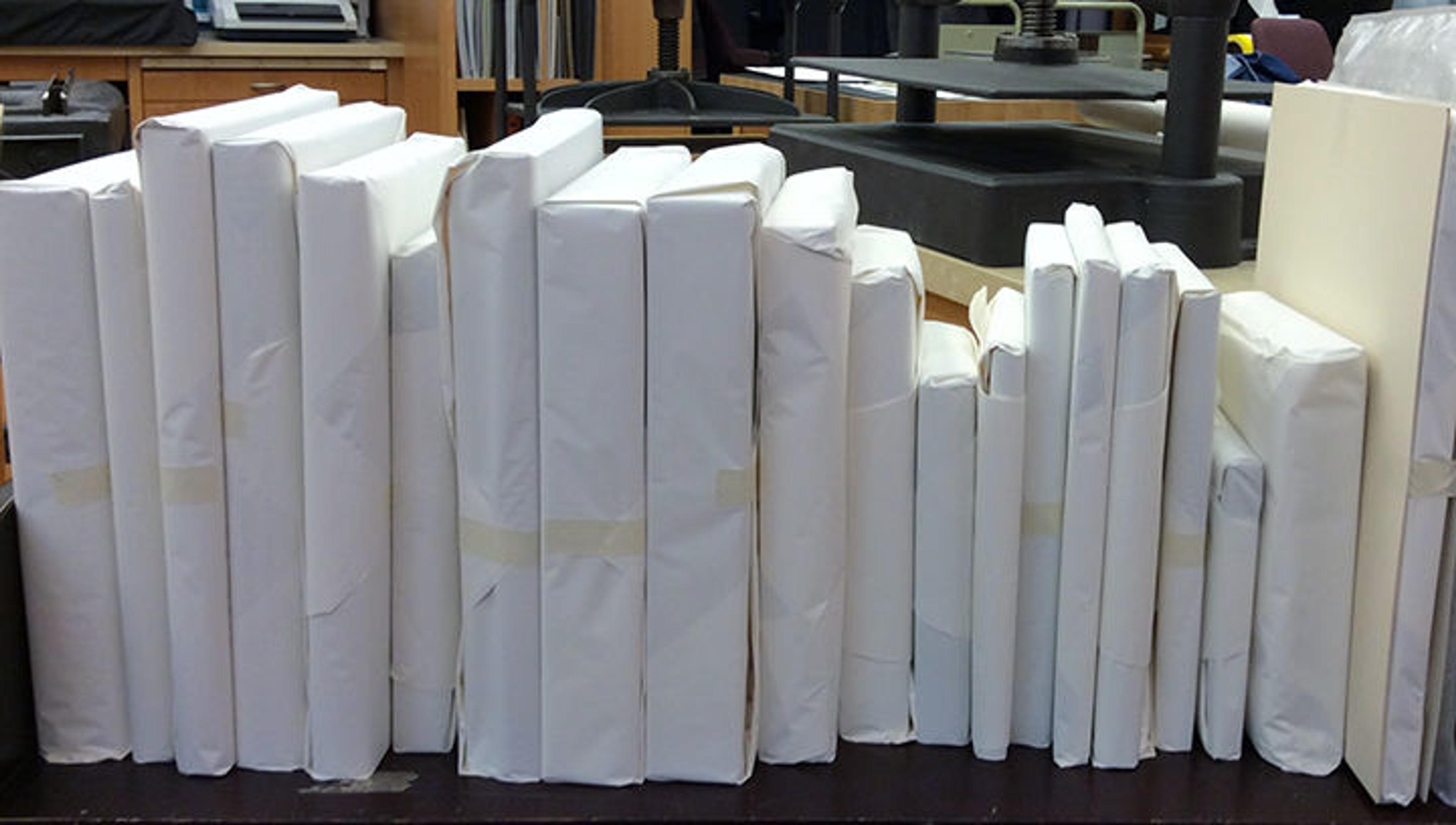
Leather-bound books, pamphlets, and fragile books wrapped in acid-free tissue and placed in an upright position. All photos by author
«For many of us, books are among our most treasured possessions. They are also easily damaged in transportation. Taking a little extra care and effort to prepare and pack them properly can maintain their condition, whether you are moving across town or putting them in storage for a long period of time. Here are some basic suggestions for packing and transporting.»
Very often books remain in temporary enclosures longer than estimated, which can cause damage. Acidic papers, boxes, and unstable environmental conditions can result in severe book damage through pest infestation and moisture that often causes mold. Basements, garages, and attics are the spaces where one should try to avoid storing books, even for a short period of time.
Thin pamphlet bindings, soft cover books, books bound in leather, and books that are already damaged are particularly vulnerable. One of the ways to secure and prevent them from further damage when packing for transportation is to wrap each book in acid-free tissue and place it between two archival boards so that book covers do not shift in transit, which can damage both the text block and the covers. While pressure-sensitive tape is the most convenient way to secure the boards and wrapping paper, one should be cautious so that the tape does not get in touch with the book itself or surrounding books that might not be wrapped in paper. Ideally, boards should be tied with cotton tape.
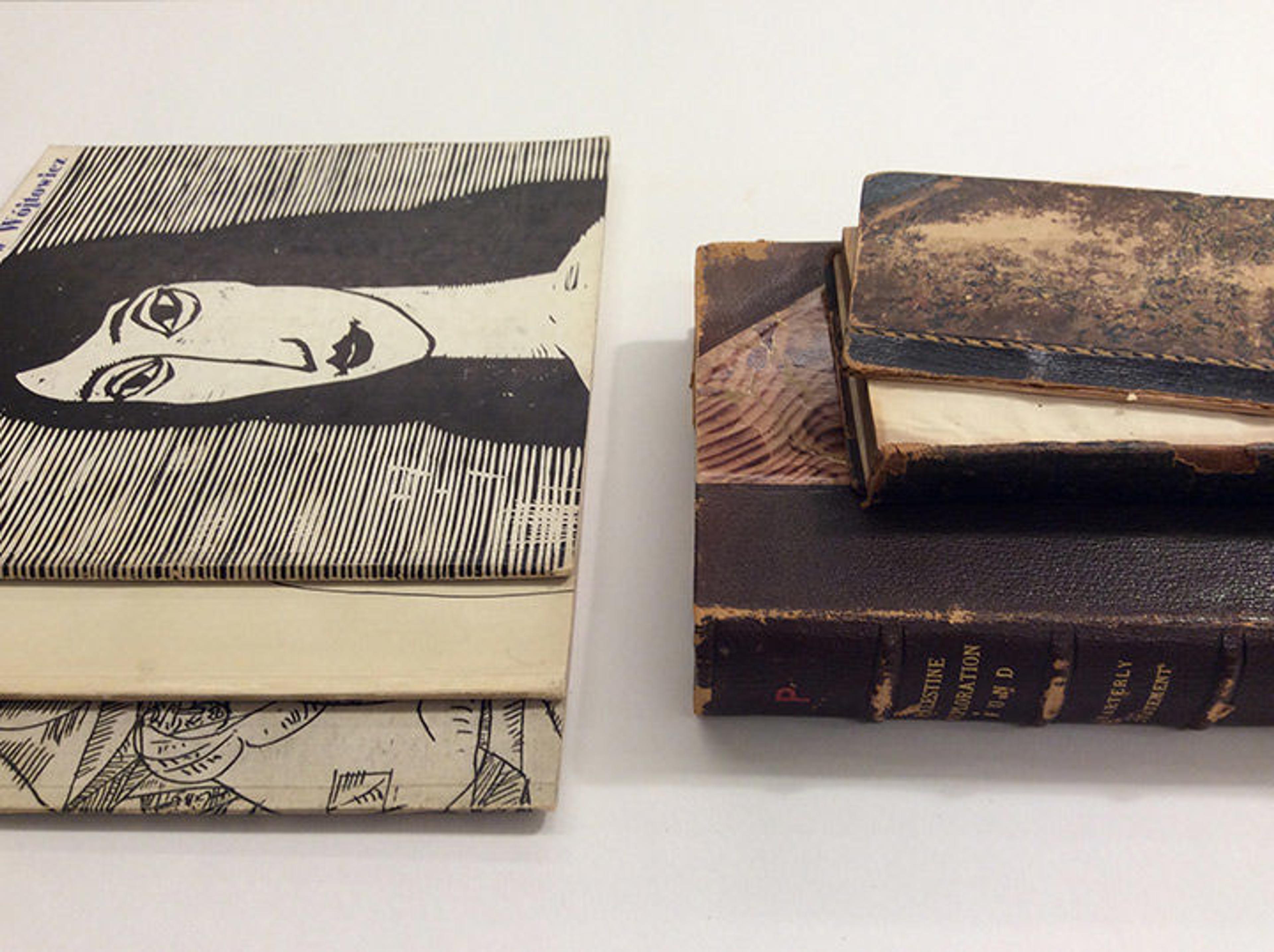
Soft cover books, leather bindings, and damaged bindings should be separately wrapped and secured before placing them into packing containers.
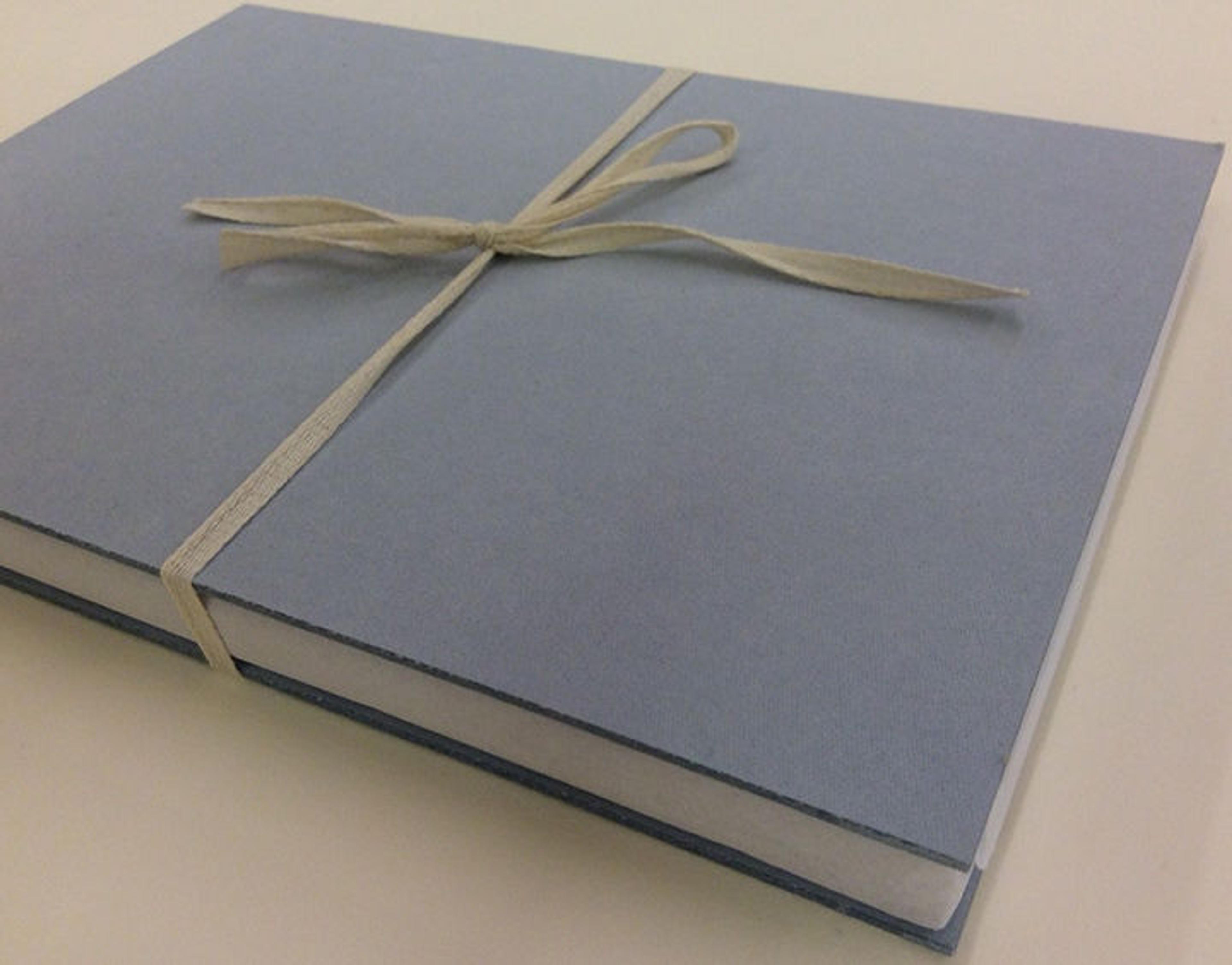
A book wrapped in acid-free tissue, placed between two boards, and tied with cotton tape.
It is very important to position books properly in their traveling containers, especially if you are planning to keep them in temporary storage for a long period of time. Every time a book is positioned improperly, it will affect its structure and result in some type of distortion over time. Ideally, books should be packed standing upright just as if they were standing on the shelf, and they should support each other and not be packed too loosely or tightly. Books that are oversized should be packed flat (no more than three or four per box), with the largest and heaviest book placed at the bottom.
Resist the urge to accommodate the size of the packing container by positioning the book on its spine or fore-edge. Placing the book on its fore-edge will deform the text block, and, due to gravity, cause it to pull away from the cover. On the other hand, placing a round-back book on its spine will cause the flattening of the spine, which is especially detrimental to leather-bound and fragile books.
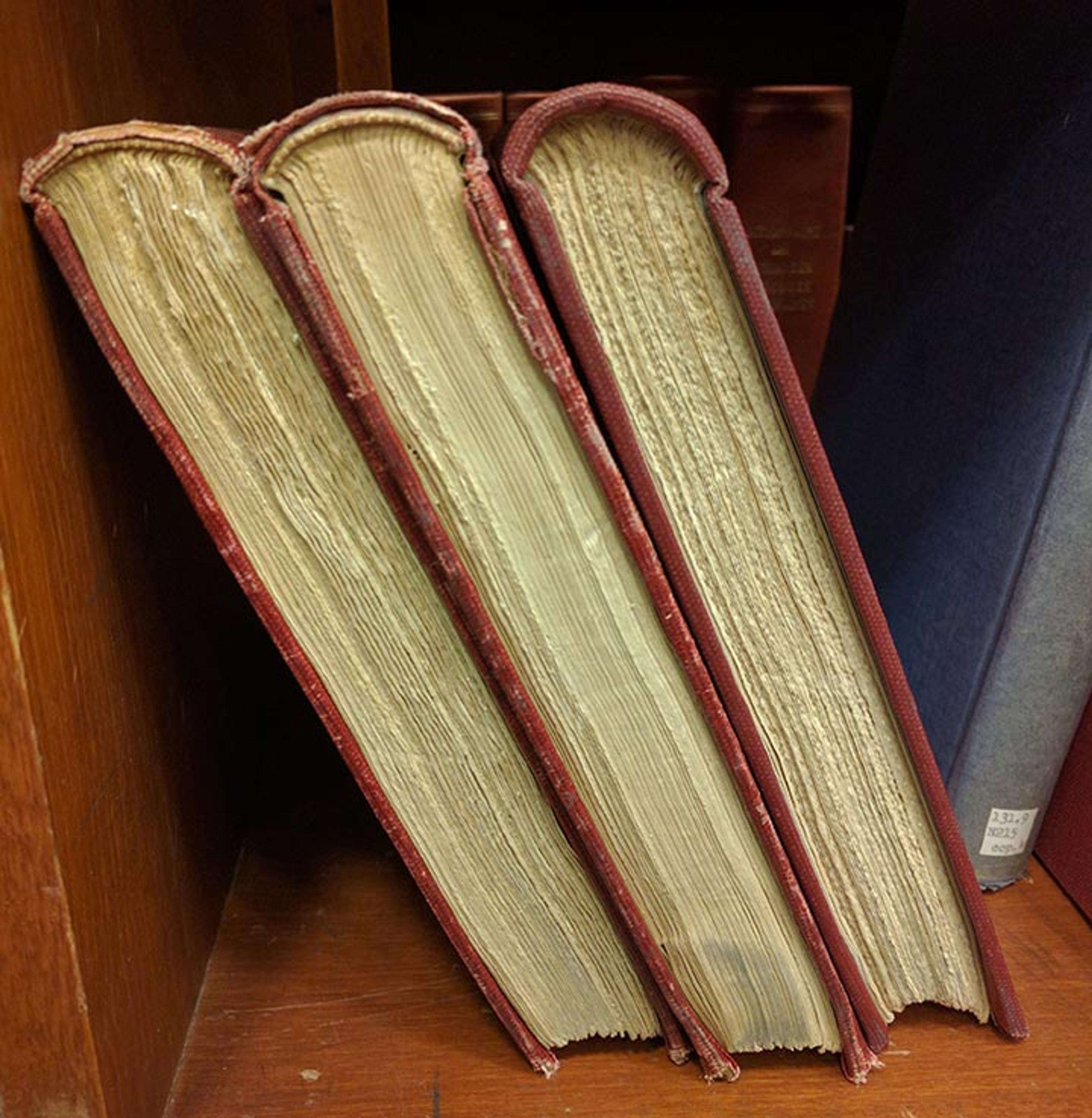
Positioning a book on its fore-edge can result in the text block becoming deformed and pulling away from the cover, resulting in permanent damage.
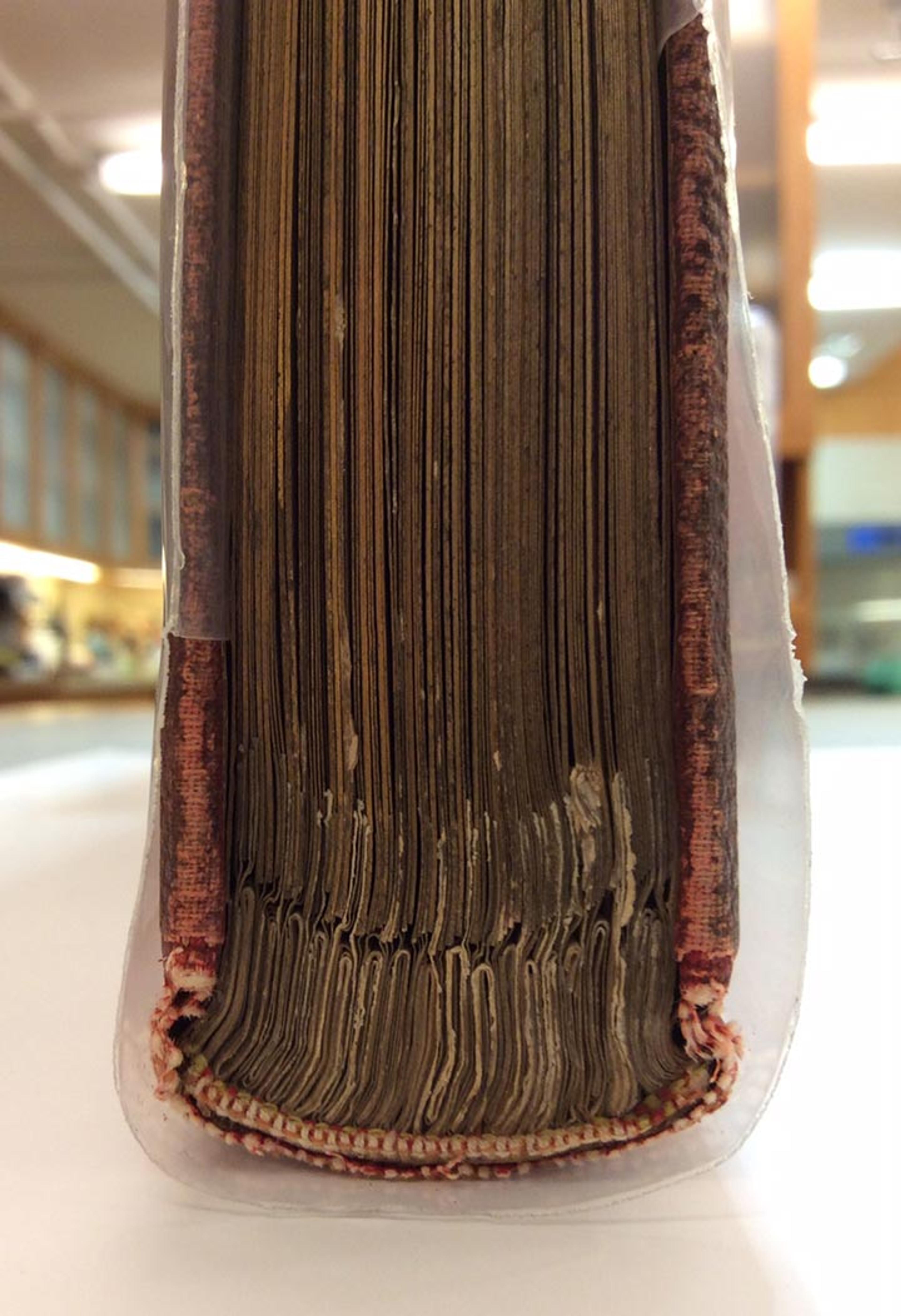
The weight of the text block causes the flattening of the convex shape of the spine over time.
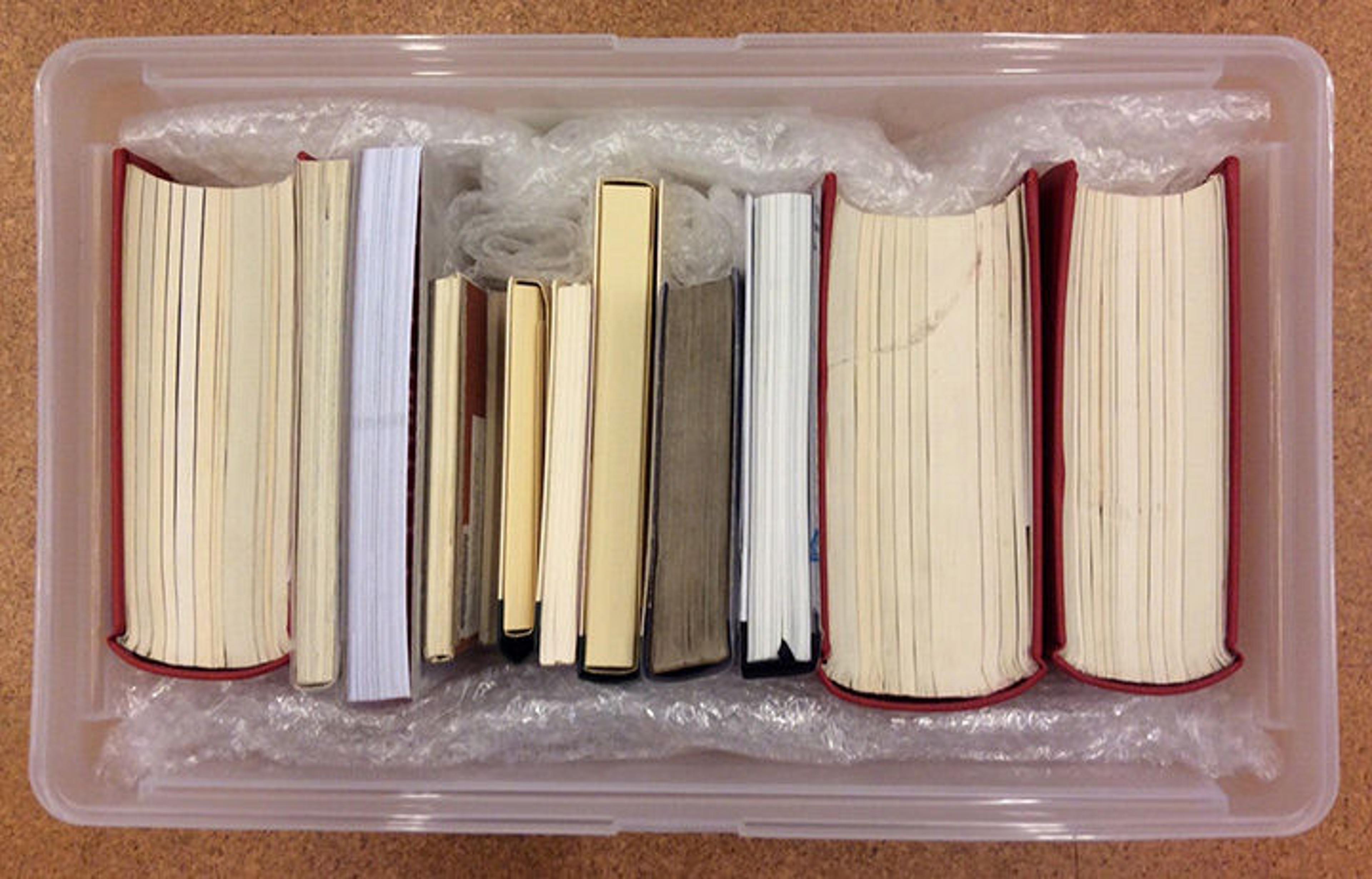
Books packed upright in a polyethylene container with the negative space filled with bubble wrap to prevent shifting

When it comes to the selection of materials, polyethylene containers are a good choice because of their strength and durability. However, if water-resistant materials are used as liners or containers, books should always be wrapped in paper first. Sudden changes in temperature can cause condensation in polyethylene containers, and the trapped moisture can damage the books. When using cardboard boxes, one should be aware of the potential for instant damage if the boxes come in contact with water. Cardboard boxes should be sturdy or doubled for strength.
Whichever type of container you choose, negative space in boxes should be filled with cushioning materials such as polyethylene foam, which will provide additional protection and buffer humidity. Lastly, it is important to use clean packing materials in order to avoid damaging your books by adhesive residues, tapes, and unclean recycled materials that may attract pests.
Large numbers of books and a lack of resources can be a challenge when packing books for transportation. Nevertheless, simple care such as keeping the books in a stable environment and positioning them correctly in their temporary storage containers can prevent irreversible damage.
For additional information, consult following resources:
Northease Document Conservation Center: Packing and Shipping Paper Artifacts
National Park Service Museum Handbook, Part I: Museum Collections
Related Links
In Circulation: Andrijana Sajic and Sophia Kramer, "The Fragility of Headcaps and the Safe Handling of Books" (May 27, 2015)
In Circulation: Andrijana Sajic and Sophia Kramer, "The Fragility of Joints and Hinges" (August 12, 2015)